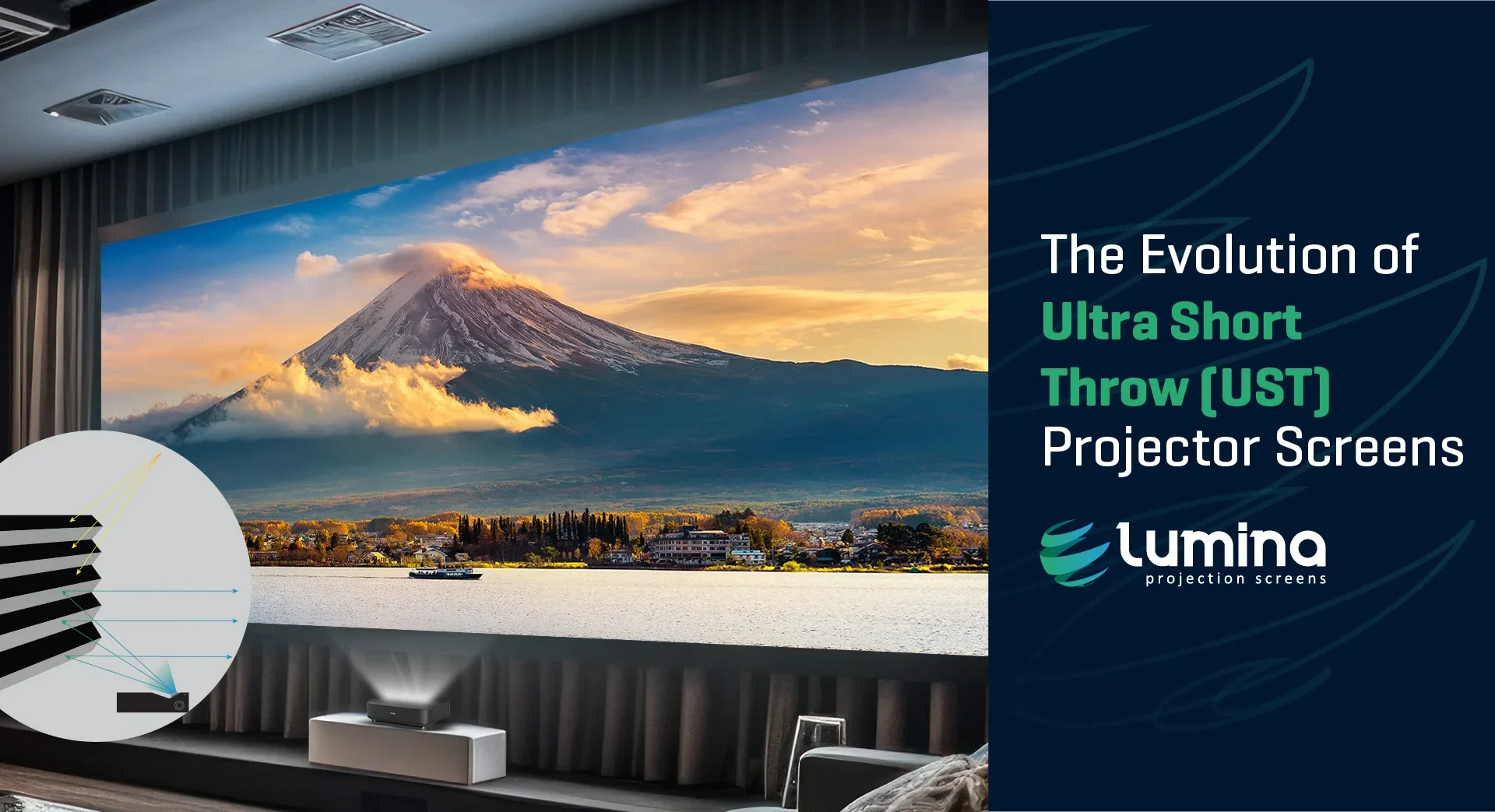
In recent years, Ultra Short Throw (UST) projection technology has transformed the home entertainment and commercial AV landscape. Designed to project large images from extremely short distances—often just a few inches away from the screen UST projectors offer a sleek, space-saving solution for modern environments. But while the projector itself plays a key role, the performance of a UST setup is only as good as the screen it’s paired with.
Why UST Screens Matter in Compact Spaces
One of the biggest advantages of UST projectors is their ability to deliver big-screen visuals in small spaces. Traditional projectors require ample throw distance and often raise concerns about shadow interference and alignment issues. UST projectors eliminate these hurdles, making them ideal for apartments, classrooms, conference rooms, and minimalist home theaters.
However, using a standard projection screen with a UST projector can significantly reduce image clarity and contrast. That’s where UST-compatible screens come in. These screens are specifically designed to optimize light coming from steep angles, which is a hallmark of UST projection. Without the right screen, users may experience issues like hot-spotting, poor brightness uniformity, or lack of contrast.
The Technical Edge of UST Screens
The design of a UST screen is more than just cosmetic. These screens use optical layering and specialized surface structures—often lenticular or Fresnel patterns—to reject ambient light and reflect only the light coming from the projector. This results in a sharper image, deeper blacks, and vibrant colors, even in rooms that aren’t completely dark.
Key technical features to look for in UST screens include:
- Ambient Light Rejection (ALR): Helps maintain image quality in well-lit environments.
- Optical Surface Structure: Engineered to capture steep-angle light from UST projectors.
- Gain and Viewing Angles: Balanced to provide brightness without hotspots and ensure a wide viewing range.
- Edge-to-Edge Uniformity: Minimizes visual distortion and maintains clarity across the screen.
As UST projectors become more popular, screen technology has evolved to meet rising performance expectations. Manufacturers now offer fixed-frame UST screens with sleek designs, ultra-thin bezels, and advanced materials that enhance both form and function.
The Growing Market for UST-Compatible Screens
The global projection screen market has seen a notable shift toward UST solutions, driven by demand from urban homes, offices, and even retail environments where floor space is limited. With the rise of 4K and even 8K content, consumers are looking for screens that match the fidelity of high-resolution projection.
Manufacturers are responding with a wide range of UST-specific screen options—from budget-friendly models for casual viewers to high-end, ALR-equipped screens for dedicated cinephiles and professionals. Additionally, custom sizing options are becoming more common to accommodate unconventional installation setups.
Conclusion
The evolution of UST projector screens highlights the importance of screen technology in delivering a true big-screen experience without needing a big space. With specialized materials, cutting-edge surface structures, and expanding market options, UST screens are no longer an accessory—they’re an essential component of a modern projection system. As more consumers embrace UST projectors, the demand for high-performance, space-friendly screens will only continue to grow.
- Date - June 13, 2025